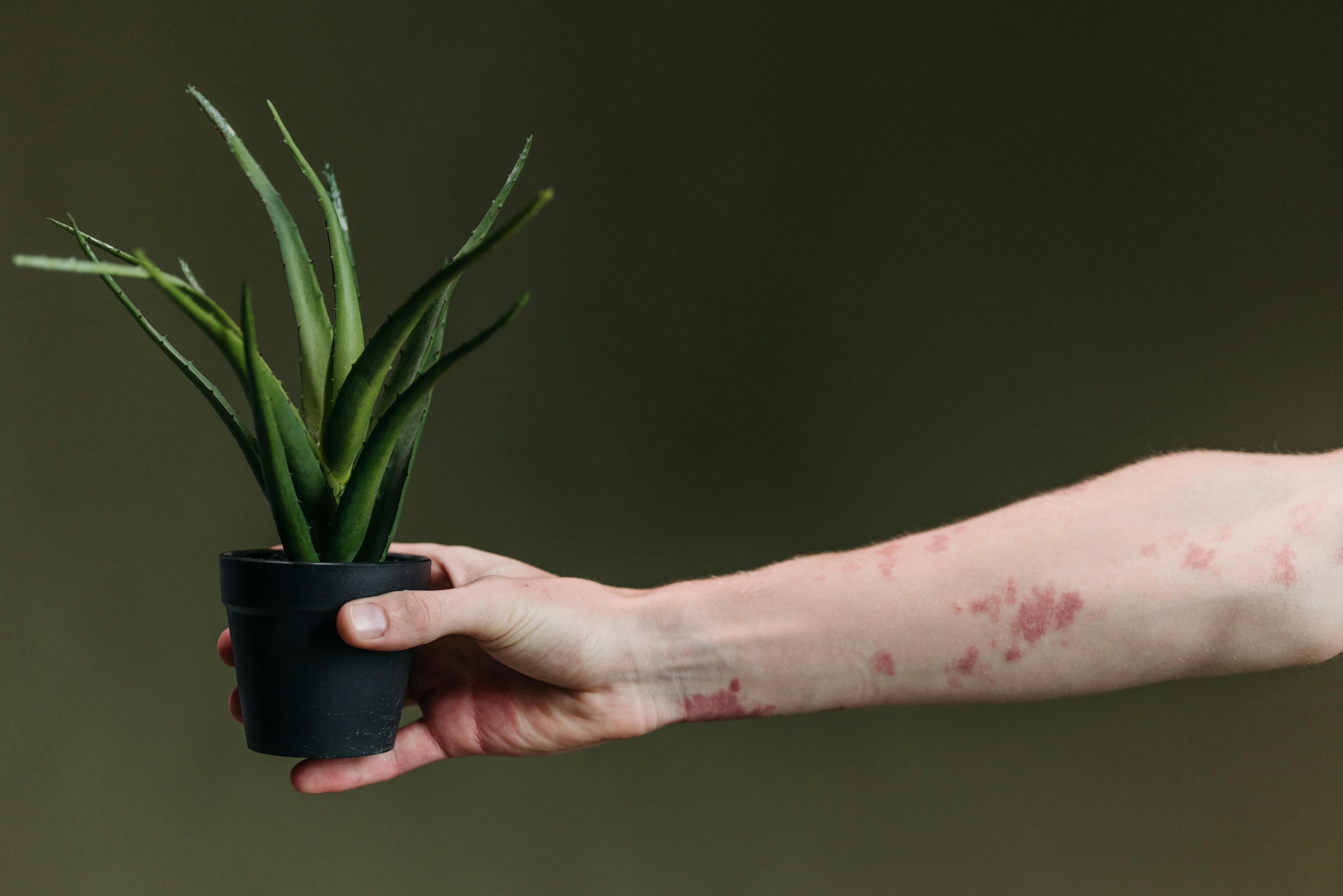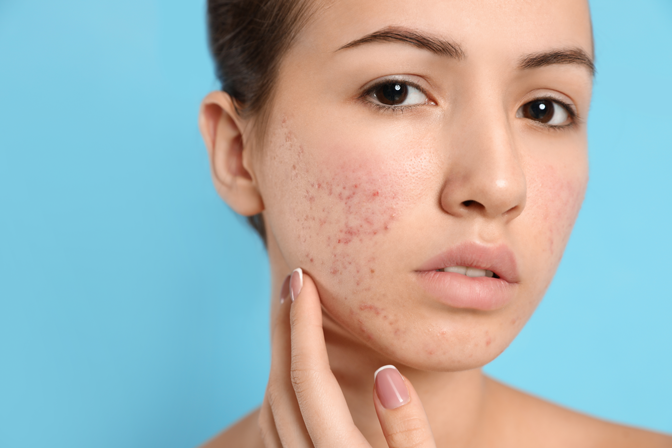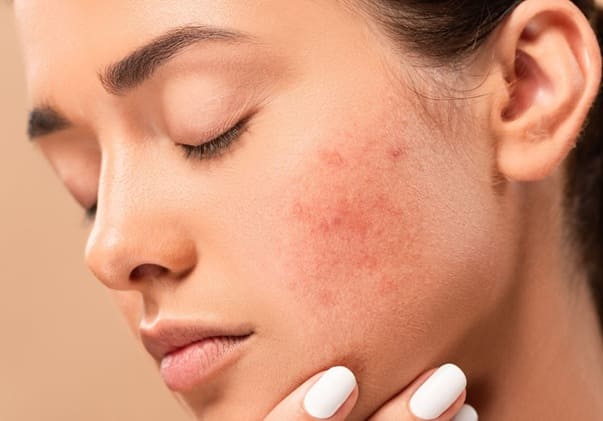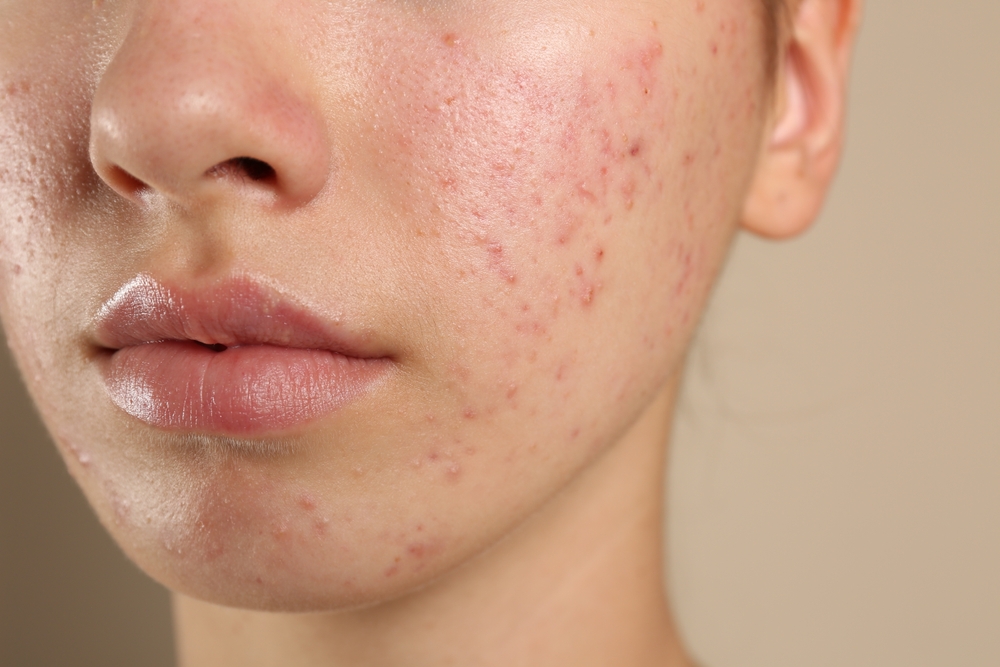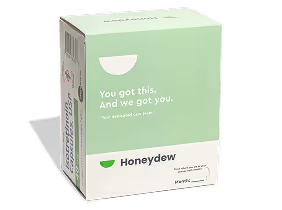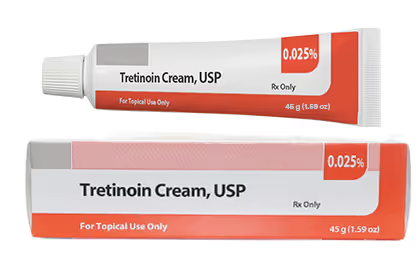Dealing with inflamed, itchy, and uncomfortable skin can be a frustrating and persistent challenge. Whether it's the chronic cycle of eczema, a sudden allergic rash, or the stubborn patches of psoriasis, finding effective relief is the primary goal. One of the most reliable and widely used treatments in dermatology for these conditions is Triamcinolone. As a potent corticosteroid, it directly targets the inflammation that causes redness, swelling, and itching, offering a path toward clearer, calmer skin.
However, understanding what Triamcinolone is, how it works, and whether it's the right choice for your specific skin condition requires expert guidance. This article provides a comprehensive overview of Triamcinolone, its dermatological uses, and how to use it safely and effectively. We will explore the conditions it treats, the different forms it comes in, and what you can expect from treatment. The goal is to empower you with knowledge so you can work with a provider to build a treatment plan that finally brings you relief.
What is Triamcinolone and How Does It Work?
Triamcinolone belongs to a class of medications known as corticosteroids, which are synthetic drugs that mimic the effects of cortisol, a hormone naturally produced by the adrenal glands. Cortisol plays a vital role in the body, including regulating metabolism, immune response, and, most importantly for dermatology, reducing inflammation.
When your skin is exposed to an irritant, allergen, or has a condition like eczema or psoriasis, the immune system triggers an inflammatory response. It sends various cells and chemicals to the area, causing the classic signs of inflammation: redness, swelling, heat, and itching. While this response is meant to be protective, in chronic skin conditions, it becomes excessive and damaging, leading to discomfort and visible skin changes.
Triamcinolone works by suppressing this overactive immune response at a cellular level. When applied to the skin or administered via injection, it enters the skin cells and blocks the production of the substances that cause inflammation, such as prostaglandins and leukotrienes. This action accomplishes several things:
- Constricts Blood Vessels: It narrows the small blood vessels in the skin, which helps reduce redness and swelling.
- Reduces Immune Cell Activity: It calms the activity of immune cells that have gathered in the area, lessening the inflammatory reaction.
- Alleviates Itch: By reducing inflammation and its associated chemical signals, Triamcinolone effectively breaks the itch-scratch cycle that often worsens skin conditions.
By targeting the root cause of the symptoms—inflammation—Triamcinolone provides rapid and effective relief for a wide range of dermatological issues. With expert guidance, like that provided by the care team at Honeydew, this medication can be a cornerstone of a successful skin treatment plan.
What Skin Conditions Does Triamcinolone Treat?
Triamcinolone is a versatile medication prescribed for numerous inflammatory skin conditions. Its ability to powerfully reduce inflammation makes it a first-line or supportive treatment for issues ranging from chronic diseases to acute allergic reactions. Here are some of the primary conditions we use Triamcinolone to manage.
Eczema (Atopic Dermatitis)
Eczema, particularly atopic dermatitis, is a chronic condition characterized by dry, itchy, and inflamed skin. It often appears in flare-ups, where symptoms intensify, causing significant discomfort and impacting quality of life. The hallmark of eczema is a compromised skin barrier, which allows irritants and allergens to penetrate more easily, triggering an inflammatory response.
Triamcinolone is highly effective at managing eczema flares. When applied topically as a cream or ointment, it quickly calms the underlying inflammation, reducing redness and providing significant relief from the persistent itch. By breaking the itch-scratch cycle, it allows the damaged skin to begin healing. For more severe or widespread eczema, a provider might prescribe a higher potency formulation or recommend its use in conjunction with other treatments, such as thick moisturizers (emollients) and non-steroidal medications like Tacrolimus.
Psoriasis
Psoriasis is an autoimmune condition where the life cycle of skin cells is accelerated. Instead of turning over in weeks, skin cells mature in just a few days. Because the body can't shed these excess cells quickly enough, they pile up on the surface of the skin, forming thick, red, scaly patches known as plaques. These plaques can be itchy and sometimes painful.
Topical Triamcinolone helps manage mild to moderate plaque psoriasis by slowing down skin cell reproduction and reducing the associated inflammation and scaling. It helps to flatten the plaques, reduce redness, and alleviate itch. For thicker, more stubborn plaques, a higher-potency ointment may be necessary. While topical steroids are a mainstay for localized psoriasis, they are often part of a broader treatment strategy that may include other topicals, phototherapy, or for more severe cases, cutting-edge systemic treatments like biologics such as Skyrizi or Tremfya.
Allergic Reactions and Rashes (Contact Dermatitis)
Contact dermatitis occurs when the skin comes into contact with a substance that causes an allergic reaction or direct irritation. Common culprits include poison ivy, nickel in jewelry, fragrances, and certain chemicals in cosmetics. The result is an intensely itchy, red rash, sometimes with blisters or weeping.
Triamcinolone is excellent for calming the acute inflammation of contact dermatitis. A medium-to-high potency cream or ointment applied for a short course can rapidly resolve the rash and control the itching. Its effectiveness in shutting down the allergic response makes it a go-to treatment for these sudden and uncomfortable skin reactions.
Seborrheic Dermatitis
Seborrheic dermatitis is a common condition that causes flaky scales, red skin, and stubborn dandruff. It primarily affects oily areas of the body, such as the scalp, face (especially around the nose and eyebrows), ears, and chest. While the exact cause is unknown, it's linked to a type of yeast that lives on the skin and an inflammatory response to it.
A low-potency Triamcinolone lotion, cream, or solution can be used for short periods to control the inflammation and flaking of seborrheic dermatitis on the face and body. For the scalp, a medicated solution or shampoo is often used. It helps reduce redness and scaling, providing relief from the visible symptoms of the condition.
Other Inflammatory Skin Issues
The anti-inflammatory power of Triamcinolone makes it useful for a variety of other dermatological concerns:
- Lichen Planus: An inflammatory condition causing purplish, itchy, flat-topped bumps on the skin.
- Discoid Lupus: A chronic autoimmune skin condition characterized by red, scaly, coin-shaped sores.
- Insect Bites: For severe reactions to insect bites, Triamcinolone can quickly reduce swelling and intense itching.
- Keloids and Hypertrophic Scars: Injections of Triamcinolone directly into raised scars can help flatten and soften them over time.
- Alopecia Areata: For this autoimmune condition that causes patchy hair loss, injections of Triamcinolone into the scalp can help suppress the inflammation attacking the hair follicles and encourage regrowth.
- Cystic Acne: While not a primary acne treatment, a dilute intralesional injection of Triamcinolone can be used to quickly shrink a large, painful, and inflamed acne cyst, reducing the risk of scarring.
How is Triamcinolone Administered for Skin Conditions?
Triamcinolone is available in several forms, allowing providers to tailor treatment to the specific condition, location on the body, and severity. The choice of formulation is a critical part of a successful treatment plan.
Topical Formulations (Creams, Ointments, Lotions, Sprays)
Topical application is the most common method for treating skin conditions. Each type of base, or "vehicle," has different properties suited for different skin types and areas.
- Ointments: These are oil-based and have a greasy texture. Ointments are very moisturizing and form an occlusive barrier on the skin, which enhances the absorption and potency of the Triamcinolone. They are best for dry, scaly, or thick-skinned areas like those affected by psoriasis or chronic eczema.
- Creams: Creams are a mix of oil and water, making them less greasy than ointments. They spread easily and are well-absorbed, making them a versatile choice for many skin conditions and body areas, including skin folds.
- Lotions: Lotions are thinner than creams and contain more water. They are ideal for covering large areas of skin or for use on hairy areas where thicker preparations would be messy. They provide a cooling effect, which can be soothing for inflamed skin.
- Sprays: Aerosol sprays offer a convenient, no-touch application method, which is useful for sensitive or hard-to-reach areas like the back or for conditions like contact dermatitis from poison ivy.
At Honeydew, our providers consider your specific condition and lifestyle when recommending a formulation. For some patients, we can even develop custom-compounded medications that combine Triamcinolone with other active ingredients to create a highly personalized and effective treatment.
Injections (Intralesional)
For certain conditions, a topical cream isn't strong enough or can't penetrate deep enough to be effective. In these cases, a provider may administer Triamcinolone via intralesional injection. This involves injecting a small amount of the medication directly into the affected skin lesion.
This method delivers a concentrated dose of the corticosteroid exactly where it's needed, minimizing systemic absorption. It is commonly used for:
- Keloid and hypertrophic scars to help flatten them.
- Large, inflamed acne cysts to reduce them quickly.
- Thick psoriatic plaques that don't respond to topicals.
- Patches of alopecia areata to stimulate hair regrowth.
These injections must be performed by a licensed medical professional to ensure proper dosage and placement, reducing the risk of side effects like skin depression (atrophy).
Oral and Other Systemic Forms
While less common for dermatological use, Triamcinolone is also available in oral tablets and as an intramuscular injection. These forms are reserved for severe, widespread, or life-altering skin conditions that do not respond to topical therapy, such as a severe case of poison ivy covering a large portion of the body or a major flare of an autoimmune skin disease. Systemic use carries a higher risk of side effects and requires careful monitoring by a healthcare provider.
Understanding Triamcinolone Strength and Dosage
Not all Triamcinolone preparations are created equal. Topical corticosteroids are categorized by potency, ranging from low (Class VII) to super-potent (Class I). Triamcinolone acetonide is typically considered a mid- to upper-mid-potency steroid, available in various strengths, most commonly 0.025%, 0.1%, and 0.5%.
Choosing the right strength is crucial for both efficacy and safety. A provider will select a potency based on several factors:
- The Condition Being Treated: A thicker psoriatic plaque requires a stronger steroid than a mild patch of eczema.
- The Location on the Body: Skin on the face, eyelids, and groin is thin and absorbs medication more readily. Only the lowest-potency steroids are typically used in these areas to prevent side effects. Thicker skin on the palms and soles can handle higher potencies.
- The Age of the Patient: Children are more susceptible to side effects, so milder steroids are preferred.
- The Extent of the Affected Area: Using a high-potency steroid over a large surface area increases the risk of systemic absorption.
Just as important as the strength is the duration of use. Long-term, continuous use of topical steroids can lead to side effects like skin thinning (atrophy), stretch marks (striae), spider veins (telangiectasias), and changes in pigmentation. To avoid this, providers often recommend using the steroid for a defined period (e.g., 1-2 weeks) to control a flare, followed by a break or a switch to a non-steroidal maintenance therapy. This "pulse" approach maximizes results while minimizing risk. Getting this balance right is key, which is why the ongoing support and progress tracking we offer at Honeydew is so valuable for patients using these treatments.
What to Expect When Using Triamcinolone
When starting a new treatment, it's helpful to know what to expect. With topical Triamcinolone, relief from symptoms like itching can often begin within a few days of consistent use. Visible improvement in redness and scaling may take a bit longer, typically a week or two, depending on the severity of the condition.
For best results, it's important to apply the medication correctly. A thin layer should be applied to the affected skin only, rubbing it in gently and thoroughly. Using more than instructed will not make it work faster but will increase the risk of side effects. It's also essential to wash your hands before and after application, unless your hands are the area being treated.
While Triamcinolone is safe when used as directed, potential side effects can occur, especially with high-potency formulas or long-term use. Local side effects are most common and can include burning or stinging upon application, skin thinning, or lightened skin color at the application site. Systemic side effects from topical use are rare but can happen if a very potent steroid is used over a large area for a prolonged time. Working closely with your care team to monitor your progress and adjust your plan as needed is the best way to ensure a safe and effective treatment course.
Frequently Asked Questions about Triamcinolone
Can I use Triamcinolone on my face?
Using Triamcinolone on the face should only be done under the strict guidance of a medical provider. The skin on the face is thin and sensitive, making it more prone to side effects like atrophy, perioral dermatitis (a rash around the mouth), and acne-like breakouts (steroid acne). If a steroid is necessary for the face, a provider will almost always prescribe the lowest possible potency (like Hydrocortisone 1%) for the shortest possible time.
How long can I use Triamcinolone?
The duration of treatment depends on the strength of the steroid and the condition being treated. For mid-potency steroids like Triamcinolone, continuous use is generally limited to a few weeks. For long-term management of chronic conditions like eczema, your provider will likely create a plan that involves using Triamcinolone to control flares and then switching to a non-steroidal cream or less frequent application for maintenance.
What happens if I stop using it abruptly?
If you've been using a potent topical steroid over a large area for an extended period, stopping suddenly can sometimes lead to a "rebound flare," where the skin condition comes back, sometimes worse than before. This is why it's important to follow your provider's instructions for tapering off the medication, which might involve applying it less frequently or switching to a lower-potency steroid before stopping completely.
Can Triamcinolone be used for acne?
Triamcinolone is generally not a treatment for common acne. In fact, using topical steroids on acne-prone skin can sometimes worsen the condition, leading to steroid acne. The one exception is the use of intralesional Triamcinolone injections for large, individual, inflammatory cysts. These "cortisone shots" can rapidly reduce the size and inflammation of a painful nodule. However, for managing persistent or widespread acne, other treatments are far more effective. At Honeydew, we offer a full spectrum of proven acne treatments, from topical retinoids like Tretinoin and antibiotics like Clindamycin to oral medications like Spironolactone, Doxycycline, and all forms of Isotretinoin, including innovative low-dose Accutane protocols designed to maximize results while minimizing side effects.
Your Personalized Treatment Journey with Honeydew
We understand that living with a persistent skin condition like eczema or psoriasis is more than just a physical burden—it can be emotionally taxing and deeply frustrating. Finding a treatment that works can feel like an endless cycle of trial and error. At Honeydew, our mission is to end that cycle. We believe that expert dermatological care should be accessible, personalized, and supportive, guiding you to the treatment plan that is right for you.
While Triamcinolone is a powerful tool in our arsenal, it is just one of many. Your journey with us begins by connecting with a licensed dermatology provider who listens to your history, examines your skin, and works with you to build a comprehensive plan. We know that one size does not fit all. If you are not satisfied with your current treatment, or if a standard prescription isn't delivering the results you want, we specialize in creating the most personalized treatments available.
Our providers can manage, adjust, and recommend treatments completely online, making it easy to stay on top of your care. This may include custom compounding a medication to the exact strength you need, or transitioning you to a different class of medication if a steroid is not the best long-term solution. For eczema, this could mean exploring non-steroidal options like Tacrolimus or Crisaborole. For psoriasis, it could involve discussing the benefits of advanced biologic treatments that offer comprehensive, long-lasting clearance. Our 100% online care model means your expert care team is always accessible for ongoing support, refills, and progress tracking, ensuring you never feel alone in your journey to healthier skin.

